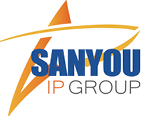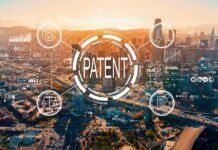While the competitive edge of a creative business model is beyond doubt, protecting it as a patent is another matter entirely, requiring careful consideration of examination criteria.
A business model is a plan for generating income based on business rules. A novel business model plays a crucial role in the survival and development of an enterprise.
Examination criteria regarding patent eligibility and inventiveness for business model-related inventions, aiming for reasonable and effective patent protection of those inventions, are clarified in two versions of the Patent Examination Guidelines issued by the China National Intellectual Property Administration (CNIPA), which took effect on 1 April 2017 and 1 February 2020m, respectively.
(1) PATENT ELIGIBILITY

Partner, Director of the Japanese E&M II Department
Sanyou Intellectual Property Agency
Article 25 of the Patent Law provides that patents shall not be granted for rules and methods of intellectual activity. The guidelines further provide that a business model containing both rules and methods of intellectual activity and technical features should not be excluded from patentability.
In addition, according to article 2(2) and relevant interpretations in the guidelines, a technical solution eligible for patent shall have three simultaneous elements, namely, the technical problem, technical means, and technical effect. A solution that does not employ technical means for solving a technical problem to obtain a technical effect conforming to the laws of nature is not patent eligible.
Examples.
Part II, chapter 9, section 6.2 of the guidelines provides a method for operating a shared bicycle as a positive example, and a method for consumption rebate as a negative example.
In the example of the shared bicycle, the user’s behaviour is controlled and guided by executing a computer programme on the terminal device and server, which involves collecting and processing such data as location and authentication information. Therefore this method embodies the three elements, and is patent- eligible.
In the consumption rebate example, a computer calculates the rebate amount based on the user’s consumption amount. In this, the computer, as an entity for performing the method, can be regarded as a technical feature, and therefore the method should not be excluded from the possibility of obtaining a patent.
However, as the rebate rule embodied in this method is no more than a man-made rule, and does not involve the laws of nature, the three elements – technical problem, technical means and technical effects – are not presented in this method, so it is not patent-eligible.
Takeaways.
For patent eligibility, it is not sufficient to merely introduce an execution entity for the commercial rules (e.g. computers). Rather, it is also to be judged whether the processes performed by the execution entity follow the laws of nature, and whether the three elements of technical problem, technical means and technical effect are involved.
(2) INVENTIVENESS
Part II, chapter 9, section 6 of the guidelines provides that examination of the inventiveness of business model-related inventions should be based on the criteria that consider the business rules, methodological features and technical features that “functionally support each other in an interactive manner” as integral.
This refers to business rules and methodological features being closely integrated with technical features to form the technical means for solving a technical problem and achieving the corresponding technical effect.
The guidelines further provide that if implementation of the business rules and methodological features included in a claim involve adaptation or improvement of technical features, it can be concluded that the business rules, methodological features and technical features functionally support each other in an interactive manner, and the contribution of the business rules and methodological features to the technical solution shall be taken into consideration in the examination of inventiveness.
Examples.
Part II, chapter 9, section 6.2 of the guidelines provides an example of method for logistics and delivery, remarking that the difference between the claimed method and the “prior art” made available lies in the batch notification of order deliveries.
To achieve the batch notification, the data architecture and data communication among the server, logistics terminal and user terminal are adapted accordingly. The rules for delivery notification and specific implementation of batch notification functionally support each other in an interactive manner, increasing efficiency of the delivery.
The guidelines further remark that the user experience is improved from the perspective of being informed of the delivery quicker, concluding that the claimed method represents an inventive step over prior art.
Takeaways.
(1) Business rules and methodological features may contribute to integral inventiveness together with technical features, as long as they functionally support each other in an interactive manner.
(2) The fact that the “implementation of the business rules and methodological features involves adaptation or improvement of the technical means” can be an essential indicator in judging if they “functionally support each other in an interactive manner”.
(3) Business model-related inventions basically involve adaptations or improvements to software processes, such as data architecture and data communication, rather than modifications to the structure or performance of hardware.
(4) Improvement of the user experience brought about by technical means comprising technical features and business rules can be taken as a technical effect.
CONCLUSION
The two amendments to the Patent Examination Guidelines, in 2017 and 2020, provide clearer examination criteria for business model-related inventions. Closely follow the provisions of the guidelines regarding patent eligibility and inventiveness when drafting application documents and responding to examination opinions.
To ensure that both patent eligibility and inventiveness are fulfilled and protected, pay careful attention to the requirement that “business rules and technical features should functionally support each other in an interactive manner”.

16/F, Block A, Corporate Square
No.35 Jinrong Street, Beijing 100033, China
Tel: +86 10 8809 1921 / 8809 1922
Fax: +86 10 8809 1920
Email: sanyou@sanyouip.com





















